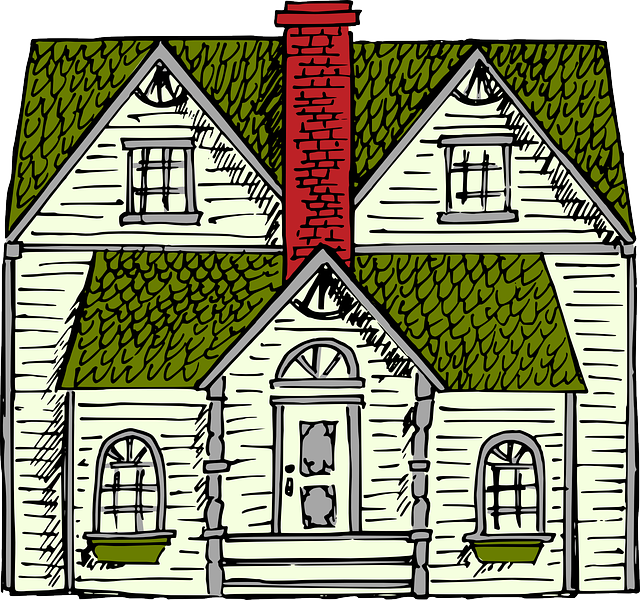Living roofs, or eco-friendly roof gardens, are sustainable design solutions that enhance property aesthetics while providing environmental benefits. These green spaces support biodiversity, reduce stormwater runoff and carbon emissions, improve air quality, and act as insulation, contributing to global sustainability efforts. Eco-roof gardens offer urban greening, improved energy efficiency, and water management, making cities cooler and more livable. Designing one involves assessing structural integrity, selecting native plants, and planning for maintenance and drainage. These gardens revolutionize urban spaces, integrating green areas into buildings, and boosting property values while promoting healthier, environmentally conscious urban living.
Discover the future of home sustainability with eco-friendly roof gardens – a growing trend that’s transforming urban landscapes. This green revolution offers more than aesthetic appeal; it provides numerous environmental and lifestyle benefits. From mitigating urban heat islands to promoting biodiversity, these living roofs are a holistic solution for environmentally conscious homeowners. Learn how to implement and maintain your own eco-roof garden, exploring design ideas and the profound impact on both ecosystems and daily life.
- Understanding Eco-Friendly Roof Gardens: A Green Revolution
- Benefits of Implementing Living Rooftops
- Designing and Maintaining Your Own Eco-Roof Garden
- The Impact on Urban Ecosystems and Homeowners' Lifestyles
Understanding Eco-Friendly Roof Gardens: A Green Revolution
Living roofs, also known as green roofs, are a revolutionary concept in home design that seamlessly blends aesthetics with sustainability. An eco-friendly roof garden is more than just a pretty addition; it’s a vibrant ecosystem that offers numerous environmental and health benefits. These gardens are designed to support plant life, reduce the urban heat island effect, and improve insulation, all while enhancing the overall beauty of a property.
The term “eco-friendly roof garden” encapsulates this green revolution by promoting natural solutions to modern challenges. By incorporating native plants, soil, and other organic materials, these roofs create habitats for local wildlife and contribute to biodiversity. Moreover, they help mitigate stormwater runoff, reduce carbon emissions, and improve air quality, making them a significant part of the global push towards sustainable living.
Benefits of Implementing Living Rooftops
Implementing living rooftops offers a plethora of benefits for both homeowners and the environment, making them an increasingly popular choice in the pursuit of eco-friendly homes. One of the most significant advantages is their positive impact on biodiversity. By transforming flat roofs into vibrant ecosystems, these structures provide habitats for various plant and animal species, contributing to urban greening and enhancing local ecosystems.
Moreover, living rooftops serve as effective insulation, reducing the need for heating and cooling systems, which leads to substantial energy savings. They also play a crucial role in mitigating stormwater runoff, absorbing rainwater and slowing its flow, thereby preventing sewer overload and improving water quality. Additionally, these eco-friendly roof gardens help to reduce the urban heat island effect, making cities cooler and more sustainable living spaces.
Designing and Maintaining Your Own Eco-Roof Garden
Designing your own eco-roof garden is an exciting way to contribute to a greener planet while enhancing your home’s appeal. The key lies in careful planning and consideration. Start by assessing your roof’s structural integrity and choosing suitable plants that can thrive in the region’s climate, ensuring they are native species to support local ecosystems. Consider the garden’s purpose—is it for food production, biodiversity promotion, or simply a serene green space? This decision will guide your plant selection and layout design.
Maintenance is an ongoing process. Regular weeding, watering during dry spells, and providing organic fertilizers will keep your eco-roof garden healthy. Ensure proper drainage to prevent waterlogging and consider using permeable materials for any new constructions to avoid strain on the roof structure. With dedication, you can create a vibrant green sanctuary that benefits both nature and your home’s overall value.
The Impact on Urban Ecosystems and Homeowners' Lifestyles
Living roofs, or eco-friendly roof gardens, are transforming urban landscapes and offering a sustainable solution for both ecosystems and homeowners. By integrating green spaces into buildings, these innovative designs provide multiple environmental benefits. The impact on urban ecosystems is significant; they help mitigate the urban heat island effect, reducing the need for energy-intensive cooling systems. Additionally, living roofs support biodiversity by creating habitats for various plant and animal species, enhancing the overall health of urban environments.
For homeowners, an eco-friendly roof garden represents a lifestyle upgrade. These green spaces offer opportunities for urban agriculture, allowing residents to grow their own fruits and vegetables. They also provide insulation, reducing energy costs, and create peaceful oases within the city, promoting mental well-being. With improved air quality and increased property value, living roofs cater to a growing desire for sustainable and healthy living environments.
Living roofs, or eco-friendly roof gardens, represent a harmonious blend of nature and architecture. By integrating green spaces into our homes, we not only enhance aesthetics but also contribute to sustainable living. These roof gardens offer numerous environmental benefits, from mitigating urban heat islands to providing habitats for local wildlife. With careful design and maintenance, homeowners can transform their rooftops into vibrant oases that improve air quality, reduce water runoff, and foster a deeper connection with nature. Embracing eco-friendly roof gardens is more than just a trend; it’s a step towards a greener, healthier future for our cities and ourselves.
